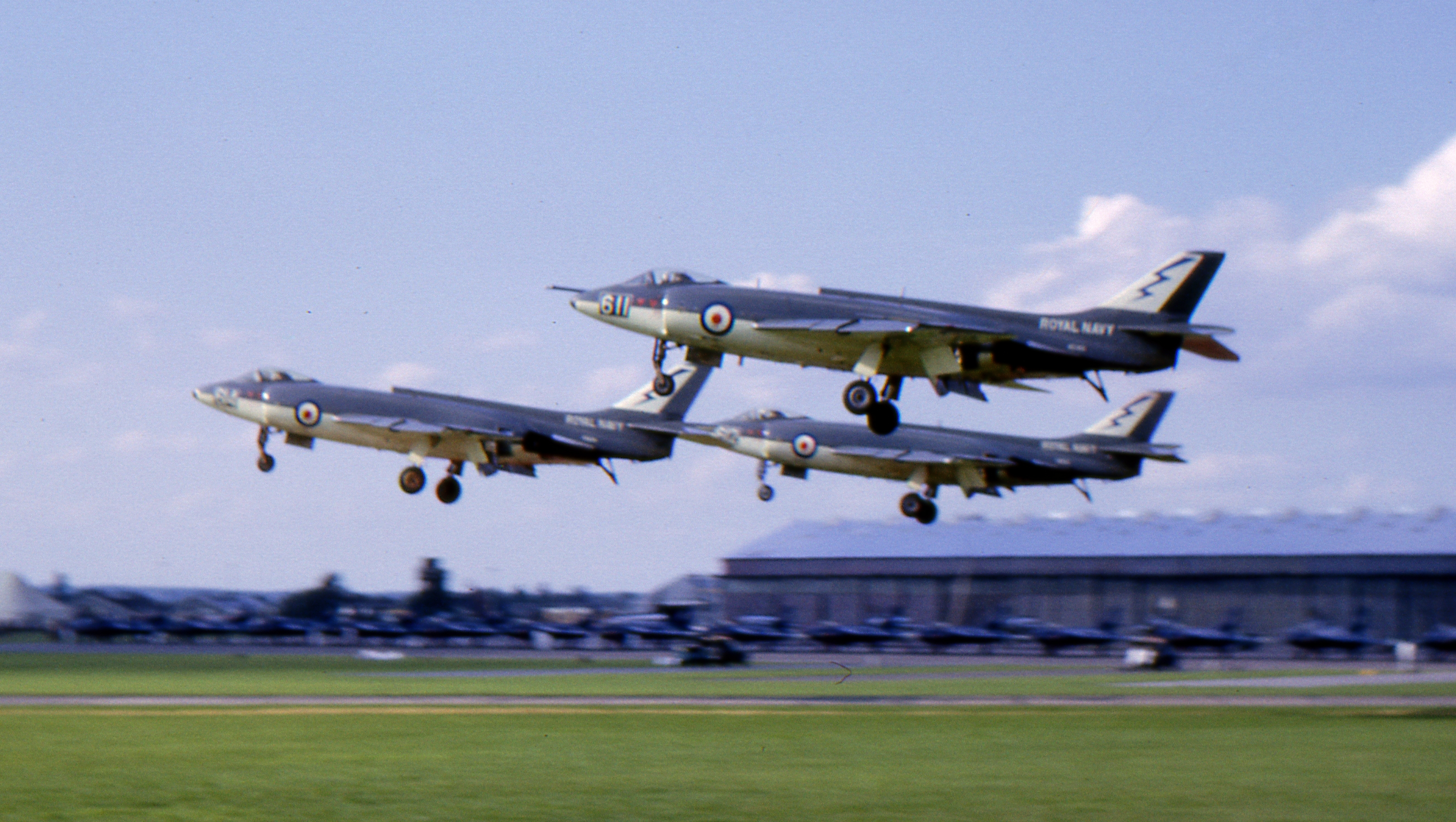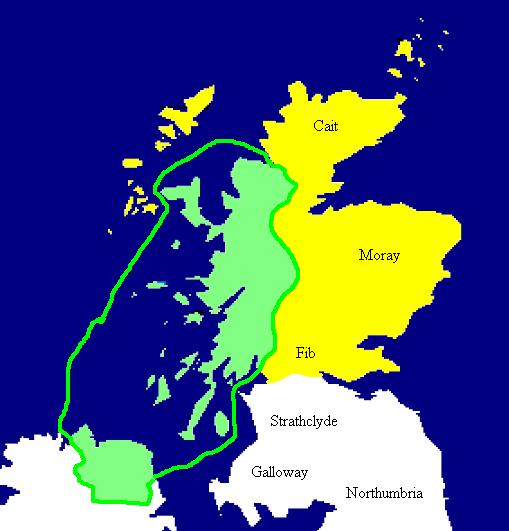|
736 Naval Air Squadron
736 Naval Air Squadron (736 NAS) was a Naval Air Squadron of the Royal Navy. It was most recently recommissioned at RNAS Culdrose on 6 June 2013 to fly the BAE Systems Hawk T1, following the disbandment of the Fleet Requirements and Aircraft Direction Unit (FRADU) and operated up until March 2022. History Formation and early years The squadron was first formed at RNAS Yeovilton on 24 May 1943 as an air combat training squadron for naval aviators, before moving to RNAS St Merryn in September that year. Between 1943 and 1952 the squadron operated several piston-engined aircraft including the Supermarine Seafire, Fairey Barracuda, Hawker Sea Fury and Fairey Firefly. The jet age The squadron moved to RNAS Culdrose in 1950 where, in August 1952, it was eventually disbanded as piston-engined squadron and reformed as the Advanced Jet Flying School; operating Supermarine Attacker and Meteor T.7 jet aircraft. It was recommissioned at RNAS Lossiemouth in June 1953 as a training squad ... [...More Info...] [...Related Items...] OR: [Wikipedia] [Google] [Baidu] |
Fleet Air Arm
The Fleet Air Arm (FAA) is one of the five fighting arms of the Royal Navy and is responsible for the delivery of naval air power both from land and at sea. The Fleet Air Arm operates the F-35 Lightning II for maritime strike, the AW159 Wildcat and AW101 Merlin for commando and anti-submarine warfare and the BAE Hawk as an aggressor. The Fleet Air Arm today is a predominantly rotary force, with helicopters undertaking roles once performed by biplanes such as the Fairey Swordfish. The Fleet Air Arm was formed in 1924 as an organisational unit of the Royal Air Force, which was then operating the aircraft embarked on RN ships—the Royal Naval Air Service having been merged with the Army's Royal Flying Corps in 1918 to form the Royal Air Force—and did not come under the direct control of the Admiralty until mid-1939. During the Second World War, the Fleet Air Arm operated aircraft on ships as well as land-based aircraft that defended the Royal Navy's shore establishments a ... [...More Info...] [...Related Items...] OR: [Wikipedia] [Google] [Baidu] |
RNAS St Merryn (HMS Vulture)
RNAS St Merryn (HMS Vulture) is a former Royal Naval Air Station of the Royal Navy's Fleet Air Arm. The site is located northeast of Newquay, Cornwall and northwest of Bodmin, Cornwall, England. History RNAS St Merryn was constructed during World War 2 with the stone for the runway being quarried from nearby Stepper Point and brought by sea. There were air raids on St Merryn Airfield and the nearby RAF St Eval on 9 October 1940 resulting in some damage at both locations. Two days later on 11 October there was another air raid on St Merryn. There were no casualties but some damage was caused on the airfield and to nearby houses. Units The following units were here at some point: Current use The site is now used for farming and a small amount of aircraft flying. See also * List of air stations of the Royal Navy This is a list of naval air stations of the Royal Navy. Naval air stations are land bases of the Fleet Air Arm, the branch of the Royal Navy responsible for ... [...More Info...] [...Related Items...] OR: [Wikipedia] [Google] [Baidu] |
Exercise Joint Warrior
Exercise Joint Warrior is a major biannual multi-national military exercise which takes place in the United Kingdom, predominately in north west Scotland. It is the successor of the Neptune Warrior exercises and Joint Maritime Course. Joint Warrior is organised by the UK Ministry of Defence and is Europe's largest military exercise and can involve up to 13,000 military personnel, from all three British armed forces, NATO and other allied countries. Up to 50 naval vessels, 75 aircraft and numerous ground-based units participate in a typical exercise. Operations include airborne assaults, amphibious landings and training in counter-insurgency, counter-piracy and interstate war. Live-fire exercises take place on various weapons ranges. Joint Warrior exercises take place in the spring and autumn and have a duration of two weeks. The exercise aims to provide a multi-threat training environment where participants take part in collective training in preparation for deployment as a ... [...More Info...] [...Related Items...] OR: [Wikipedia] [Google] [Baidu] |
736 NAS Markings
__NOTOC__ Year 736 ( DCCXXXVI) was a leap year starting on Sunday (link will display the full calendar) of the Julian calendar. The denomination 736 for this year has been used since the early medieval period, when the Anno Domini calendar era became the prevalent method in Europe for naming years. Events By place Europe * Charles Martel, Merovingian mayor of the palace, forms local alliances with the Burgundians, and imposes Frankish domination on Provence. He defeats Muslim forces at Sernhac and Beaucaire in Septimania (Southern France). * Battle of Nîmes: The Franks under Charles Martel fail to capture Narbonne but devastate most of the other settlements, including Nîmes, Agde, Béziers and Maguelonne, which Martel views as potential strongholds of the Umayyads. Britain * King Æthelbald of Mercia is described in the ''Ismere Diploma'' as ruler (''bretwalda'') of the Mercians, and all the provinces in southern England. He is also named "Rex Britanniae" (king o ... [...More Info...] [...Related Items...] OR: [Wikipedia] [Google] [Baidu] |
237 OCU
Conversion units and operational conversion units (OCUs) were training units of the Royal Air Force (RAF). History With the introduction of new heavy bombers, the four-engined Short Stirling, Avro Lancaster, and Handley Page Halifax, the Royal Air Force introduced heavy conversion units (HCU). These HCUs began forming in late 1941, to qualify crews trained on medium bombers to operate the heavy bombers before final posting to the operational squadrons. Some of the HCUs were involved in bombing operations over Germany. After the end of the Second World War, the role of the HCUs was taken over by the operational conversion units (OCUs). Although the units had nominal bases, different flights and individual aircraft usually were detached nearer the operational bases. RAF OCUs are training units that prepare aircrew for operations on a particular type or types of aircraft or roles. Some OCUs have a shadow, or reserve, squadron designation, which is used if the unit has a war r ... [...More Info...] [...Related Items...] OR: [Wikipedia] [Google] [Baidu] |
803 Naval Air Squadron
803 Naval Air Squadron was a Royal Navy Fleet Air Arm squadron. History Interwar 803 NAS was formed on 3 April 1933 by promoting No 409 (Fleet Fighter) Flight to the status of a squadron, with nine Ospreys. In the same month it embarked on for the Far East, where it remained (transferring to in January 1935) until disbandment on 1 October 1937. 803 Squadron was re-formed on 21 November 1938 at RNAS Worthy Down out of 'B' Flight of No 800 Squadron. Equipped with six Ospreys and three Nimrods, then (from December 1938) six Skuas and three Nimrods, the squadron embarked in in April 1938 as an RAF squadron but was transferred to Admiralty control on 24 May 1939. World War II At the outbreak of World War II, the Skuas and Rocs which formed 803 Squadron were embarked on . Operating out of Scapa Flow, the squadron carried out anti-submarine patrols in the Northwestern Approaches (losing two Skuas in an attack on on 14 September 1939 and defending ) and regular patrols off No ... [...More Info...] [...Related Items...] OR: [Wikipedia] [Google] [Baidu] |
Lieutenant Commander
Lieutenant commander (also hyphenated lieutenant-commander and abbreviated Lt Cdr, LtCdr. or LCDR) is a commissioned officer rank in many navies. The rank is superior to a lieutenant and subordinate to a commander. The corresponding rank in most armies and air forces is major, and in the Royal Air Force and other Commonwealth air forces is squadron leader. The NATO rank code is mostly OF-3. A lieutenant commander is a department officer or the executive officer ( second-in-command) on many warships and smaller shore installations, or the commanding officer of a smaller ship/installation. They are also department officers in naval aviation squadrons. Etymology Most Commonwealth and other navies address lieutenant commanders by their full rank or the positions they occupy ("captain" if in command of a vessel). The United States Navy, however, addresses officers by their full rank or the higher grade of the rank. For example, oral communications in formal and informal s ... [...More Info...] [...Related Items...] OR: [Wikipedia] [Google] [Baidu] |
Hawker Sea Hawk
The Hawker Sea Hawk is a British single-seat jet day fighter formerly of the Fleet Air Arm (FAA), the air branch of the Royal Navy (RN), built by Hawker Aircraft and its sister company, Armstrong Whitworth Aircraft. Although its design originated from earlier Hawker piston-engined fighters, the Sea Hawk was the company's first jet aircraft. Following acceptance in the RN, the Sea Hawk proved to be a reliable and sturdy workhorse. A considerable number were also produced for the export market and were operated from aircraft carriers in Dutch and Indian service. The last operational Sea Hawks, operated by the Indian Navy, were retired in 1983. Design and development Origins Towards the end of the Second World War, Hawker's design team had become increasingly interested in developing a fighter aircraft that took advantage of the newly developed jet propulsion technology. Prior to this, Hawker had been committed until late 1944 to the production and further development of its pis ... [...More Info...] [...Related Items...] OR: [Wikipedia] [Google] [Baidu] |
Sea Vampire
The de Havilland Vampire is a British jet fighter which was developed and manufactured by the de Havilland Aircraft Company. It was the second jet fighter to be operated by the RAF, after the Gloster Meteor, and the first to be powered by a single jet engine. Development of the Vampire as an experimental aircraft began in 1941 during the Second World War, to exploit the revolutionary innovation of jet propulsion. From the company's design studies, it was decided to use a single-engine, twin-boom aircraft, powered by the Halford H.1 turbojet (later produced as the Goblin). Aside from its propulsion system and twin-boom configuration, it was a relatively conventional aircraft. In May 1944 it was decided to produce the aircraft as an interceptor for the Royal Air Force (RAF). In 1946 the Vampire entered operational service with the RAF, only months after the war had ended. The Vampire quickly proved to be effective and was adopted as a replacement of wartime piston-engined fight ... [...More Info...] [...Related Items...] OR: [Wikipedia] [Google] [Baidu] |
RNAS Lossiemouth
Lossiemouth ( gd, Inbhir Losaidh) is a town in Moray, Scotland. Originally the port belonging to Elgin, it became an important fishing town. Although there has been over 1,000 years of settlement in the area, the present day town was formed over the past 250 years and consists of four separate communities that eventually merged into one. From 1890 to 1975, it was a police burgh as Lossiemouth and Branderburgh. Stotfield, the first significant settlement (discounting Kinneddar which has now disappeared), lies to the north west of the town. Next was the Seatown – a small area between the river and the canal inholding of 52 houses, 51 of which are the historic fisher cottages. When the new harbour was built on the River Lossie, the 18th-century planned town of Lossiemouth, built on a grid system, was established on the low ground below the Coulard Hill. Branderburgh formed the final development during the 19th century. This part of the town developed entirely as a result of th ... [...More Info...] [...Related Items...] OR: [Wikipedia] [Google] [Baidu] |
Scimitars 62
A scimitar ( or ) is a single-edged sword with a Convex curve, convex curved blade associated with Middle Eastern, South Asian, or North African cultures. A European term, ''scimitar'' does not refer to one specific sword type, but an assortment of different Eastern curved swords inspired by types introduced to the Middle East by Central Asian ghilmans. These swords include the Persian shamshir (the origin of the word scimitar), the Arab Arab sword, saif, the Indian talwar, the North African nimcha, and the Turkish kilij. All such swords are originally derived from earlier curved swords developed in Turkic peoples, Turkic Central Asia (Turkestan). Etymology The English term :wikt:scimitar, ''scimitar'' is attested from the mid-16th century and derives from either the Middle French ''cimeterre'' (15th century) or from the Italian ''scimitarra''. The ultimate source of these terms is corruptions of the Persian ''shamshir.'' ''Scimitar'' became used to describe all curved oriental ... [...More Info...] [...Related Items...] OR: [Wikipedia] [Google] [Baidu] |
Hawker Sea Fury
The Hawker Sea Fury is a British fighter aircraft designed and manufactured by Hawker Aircraft. It was the last propeller-driven fighter to serve with the Royal Navy, and one of the fastest production single reciprocating engine aircraft ever built. Developed during the Second World War, the Sea Fury entered service two years after the war ended. It proved to be a popular aircraft with a number of overseas militaries and was used during the Korean War in the early 1950s, and by the Cuban air force during the 1961 Bay of Pigs Invasion. The Sea Fury's development was formally initiated in 1943 in response to a wartime requirement of the Royal Air Force (RAF), with the aircraft initially named Fury. As the Second World War drew to a close, the RAF cancelled their order for the aircraft; however, the Royal Navy saw the type as a suitable carrier aircraft to replace a range of increasingly obsolete or poorly suited aircraft being operated by the Fleet Air Arm. Development of the ... [...More Info...] [...Related Items...] OR: [Wikipedia] [Google] [Baidu] |








